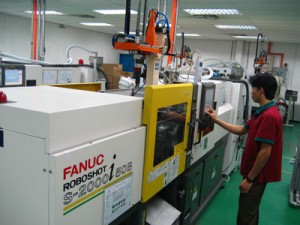
Apparently over 30% of food produced is wasted before being eaten
It is interesting to read that the focus of active and intelligent (A&I) packaging has shifted from “manufacturer concerns” such as shelf-life and spoilage to “consumer concerns such as freshness, quality and information”, according to recently published research.
The report – ‘The Future of Active and Intelligent Packaging in Food and Drinks’ said that industry leaders had identified “freshness indicators as the most important innovations in the field over the next five years. A development on quality was listed as the next most important field followed by temperature and time indicators.”
However, with over 30% of all food that we buy being wasted, I would hardly call “shelf-life and spoilage” just “manufacturing concerns”. They are huge and global concerns for everyone, much of which is to do with education and the role that packaging can play to save costs for everyone in the supply chain (very important in the present economic situation) but also, ultimately, to help save the planet’s finite resources.
I’m not sure how the research was conducted, what questions were asked, or how they were asked, but apparently, consumers ranked “health, convenience, safety and enhancing product attributes” as the most important attributes that would make them willing to pay more for A&I-packaged products. “Longer shelf-life and packaging that communicates product information” were also seen as important, but consumers perhaps see these as a ‘given’ and wouldn’t necessarily want to pay extra for them.
It is my feeling that the growth of A&I packaging has been primarily technology-led, by developments in sensor technology including nanosensors and biosensors. This is highlighted by the emerging trend of the incorporation of scavenging functions into packaging with bottles, labels or films. This is great technology, but I’m not sure that most consumers would understand what these are or what benefits they bring and therefore they would certainly not want to pay for their incorporation.
It is true that “Delivery of efficiencies in the value chain and the opportunity for manufacturers to differentiate their products and boost their efficiency by reducing product losses” will be major benefits for manufacturers and retailers – but what about consumers? There is a huge consumer-led marketing ‘trick’ being missed here, especially when “High production costs, compliance with food safety regulations and consumer mistrusts” are being highlighted in the report as “potential challenges”.
So, it is good to see that the consumer perspective is taking greater prominence (to some degree at least), in the New Product developments (NPD) that will help meet consumer needs in the expanding drinks and ready-meals segments. I agree, that the current focus for A&I has to be on luxury goods initially, and that it will move to lower-end products as the technology becomes more widely available and costs fall, but maybe it’s time to take a large ’step back’, flip this around completely and look at it from a consumers’ point-of-view. It is up to us all to educate consumers – highlight the wider issues of food (and water) waste & spoilage, get them to understand the more holistic effects of these on their daily ‘wants & (real) needs’ and ultimately get their ‘buy-in’ to the ‘real’ benefits.
Chris Penfold
You can read the full article at www.foodproductiondaily.com
Many thanks to @PhilCyLaw in Brussels for bringing this to our attention via Twitter.










